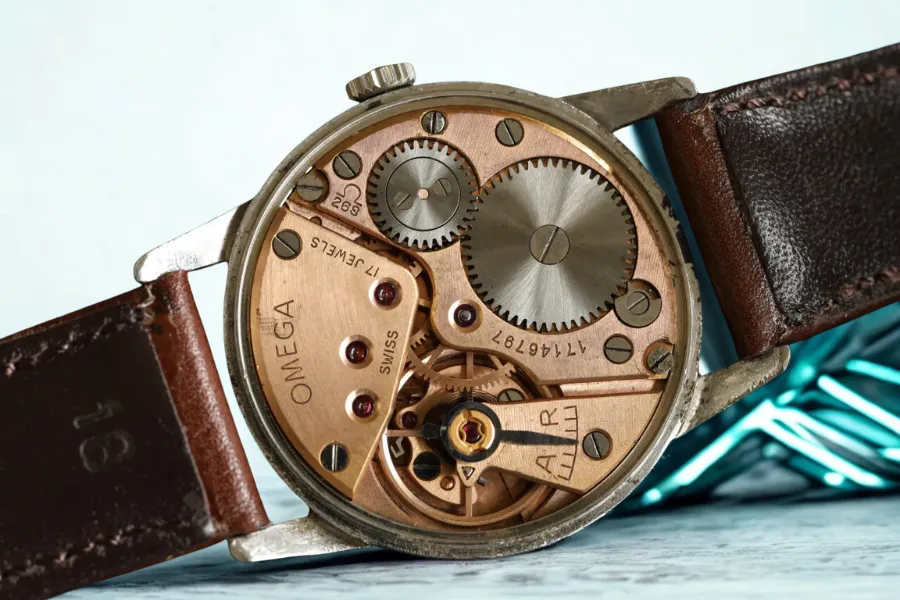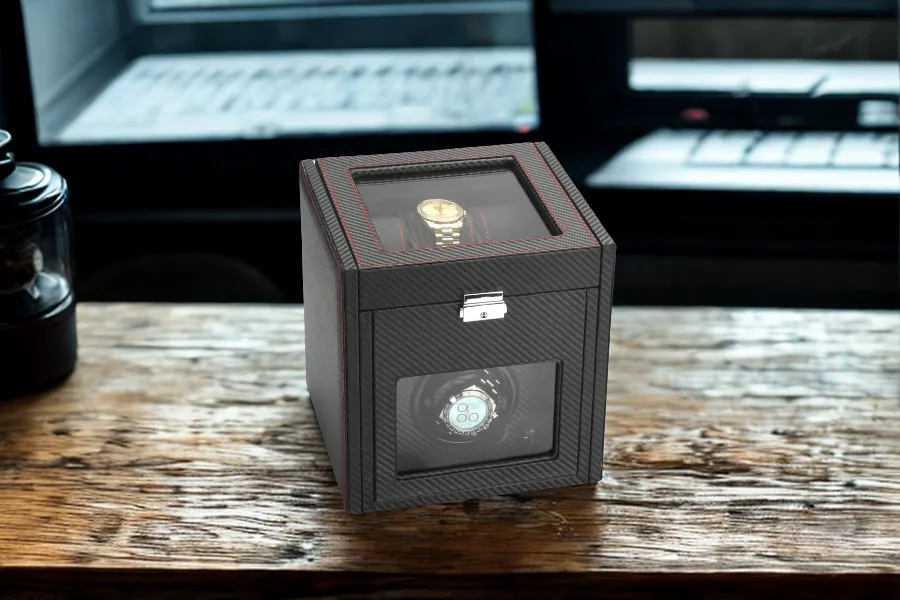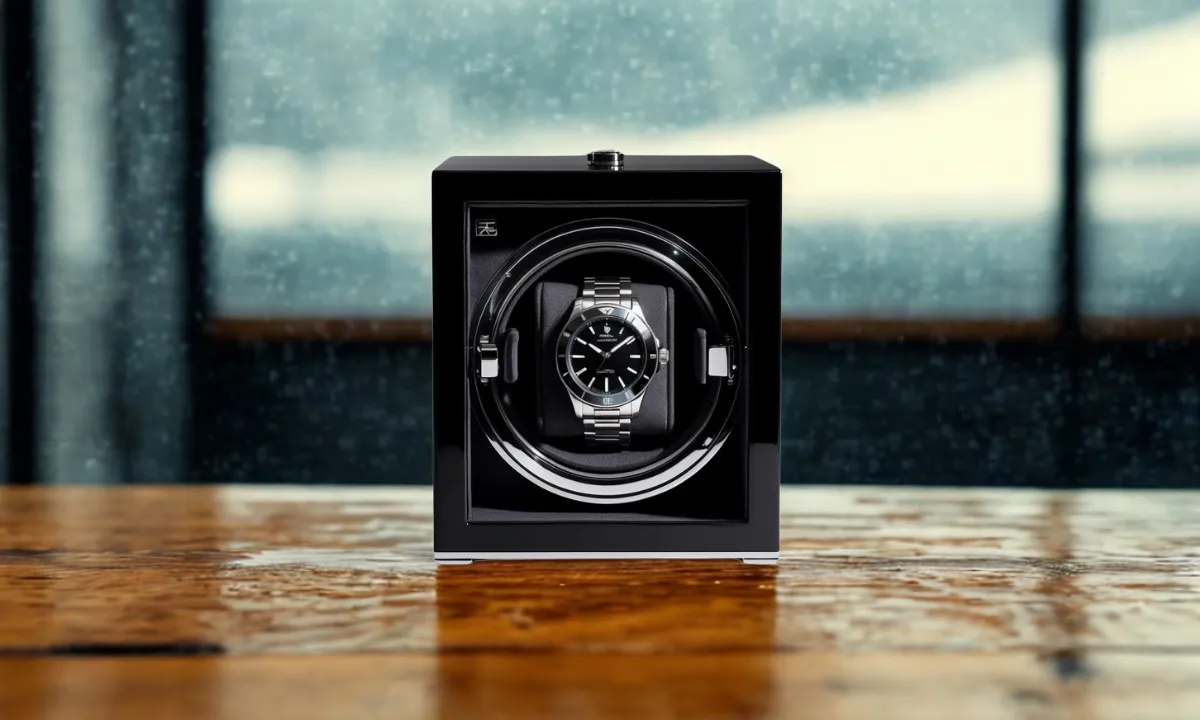Share This Post
“Will my watch fall apart if it spins all day?”
That’s what I wondered when I placed my Sub on a winder. The truth: modern automatics can sit on a quality watch winder for months—sometimes years—without harm. The secret is not the clock on your wall; it’s the settings on the watch winder.
Stick with me for a few minutes and you’ll know how long your watch can stay on, which numbers to punch in, and when to give it a breather.

Safe Duration on a Watch Winder by Watch Type
Are watch winders bad for long-term use?
Only when we use them incorrectly. Let’s sort the myths by watch group so you can act right away.
Simple Automatics: Park Them Forever
Own a Seiko 5, Rolex Submariner, or plain-Jane Omega Seamaster? These movements thrive on constant motion.
Examples
- Seiko SKX007
- Rolex Submariner
- Omega Seamaster 300
Why it’s great
- Always ready—no date reset at 7 a.m.
- Stable timekeeping—less drift.
- Zero daily winding—more coffee time for you.
My own 2015 Submariner has lived on a wonderful Mozsly watch winder for two straight years and still runs within +2 s/day. Not bad for a desk diver.
Complicated Watches: Six-Month Check-Ups
GMTs, chronographs, and annual calendars—each adds extra wheels and pivots.
More parts mean more points that might wear.
Practical tip: let them spin, but every six months, pull the watch off and give it a quick once-over.
Common models
- Rolex GMT-Master II
- Omega Speedmaster Pro
- Breitling Navitimer
I mark a reminder in my phone. At six months, I check timing, cycle the pushers, and feel the crown. Five minutes well spent, and no big bills later.
Vintage Pieces: One- to Three-Month Rotations
Vintage watches often run on older oils. They need shorter workouts and longer naps.
Watch for these hints
- Drift over ±10 s/day
- Stiff crown
- Odd clicks or rasps
My 1976 Omega Geneve gains 20 s after a month on the winder. I park it in a drawer for a week, then back it goes. Works like a charm.
What Really Happens During Long Stints on a Watch Winder
Why You Can’t “Overwind” with Modern Winders
Overwinding is a myth for autos. Inside the movement, you’ll find a slip clutch—a tiny bridle on the mainspring. Once the spring is tight, the clutch slips, just like a car clutch. Energy stops building; nothing snaps.
That’s why you can shake an automatic all day and still not break it.
A good watch winder just replaces your wrist.
Real Risks (and Simple Fixes)
The danger is not time; it’s bad settings or bad surroundings.
- Wrong TPD — too many turns can wear rotor bearings.
- Wrong direction — some vintage calibers prefer one way.
- Bad environment — heat, vibration, or magnetism.
Simple fixes:
- Look up the maker’s TPD spec. If unclear, a 650 bidirectional is safe 90 % of the time.
- When unsure about direction, choose bidirectional.
- Keep the watch winder in a stable, dry spot—no window sills or loudspeakers.
Do watch winders damage watches?
Only if you ignore the three bullets above.

Getting Your Watch Winder Settings Right
TPD Cheat Sheet
| Brand | Common Range (TPD) |
| Rolex | 650 – 950 |
| Omega | 650 – 900 |
| Seiko | 500 – 950 |
| TAG Heuer | 650 – 1100 |
| Breitling | 650 – 800 |
How to confirm:
- Check the manual.
- Search WatchBase or brand forums.
- Still unsure? Start at 650 bidirectional and monitor for a week.
A wanderful Mozsly automatic watch winder offers four TPD modes, compatible with the TPD specifications of most watches on the market.
Continuous vs. Intermittent
You’ll see two choices:
- Continuous – spins all day.
- Intermittent – runs, then rests.
I vote intermittent; it copies real wrist wear and gives the slip clutch coffee breaks. My go-to: 2 hours on, 6 hours off. Works for 90 % of watches and keeps wear low.
Rotation Direction—Keep It Simple
Bidirectional works for nearly every modern movement. Only special or very old calibers demand one direction. If you own one of those, you likely already know. Everyone else: choose “both” and move on.

When to Pull the Watch Off the Watch Winder
Before Travel or Service
- Travel – Bumps and TSA trays are rough. Pop the watch into a padded roll instead of carrying the entire winder.
- Service – Take the watch off the winder 48 hours before the appointment. It lets the watchmaker see natural amplitude and power-reserve health.
Signs Your Watch Needs a Break
- Loses or gains >10 s/day
- Grinding noises
- Gritty crown
- Condensation
- Stuttering second hand
If any pop up:
- Take the watch off.
- Let it rest flat for 24–48 h.
- Recheck. If trouble stays, call a pro.
Quick Decision Guide: 30 Seconds to Clarity
Formula
Modern automatic + correct TPD + bidirectional = leave it on forever.
Rapid checklist
- Made after 1990?
- TPD in spec?
- Bidirectional or correct single direction?
After checking the above points, your watch can safely remain in the watch winder.
Red Flags—Stop Now
- ±15 s/day drift
- Loud clicks or grinding
- Sticky crown
- Foggy crystal
- Jumping second hand
If any of the above issues occur, please remove the watch from the watch winder.
And then note the issue, and contact a watchmaker if it persists.
Conclusion
So, can using a watch winder for such a long time damage the watch?
Not when you:
- Match the proper TPD.
- Use bidirectional (or the needed direction).
- Keep an eye on odd noises or timing swings.
Do that, and duration becomes a non-issue.
Your automatic stays wound, the date stays correct, and you get to enjoy a ready-to-wear watch every single morning.
That’s exactly what a quality watch winder—Mozsly or any other good unit—is meant to do.
Now press Start and enjoy your collection.
Related Post's
Featured Video
Provide an email subscription feature for users to sign up for updates.
Follow the world of watches and cigars for exclusive content!
By subscribing to our newsletter, you will be the first to receive notifications of our latest articles, popular posts and special events.





